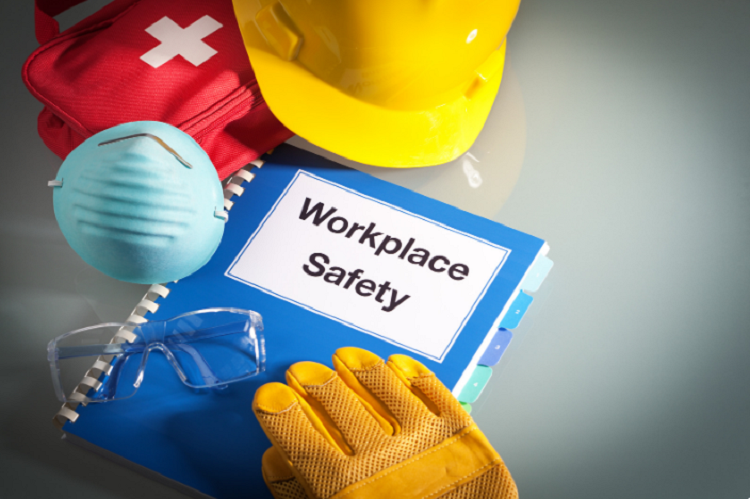Electricity is essential for running a business but can be dangerous if improperly handled. Electrical hazards are a leading cause of workplace accidents, and it is important to take steps to keep your employees safe.
Luckily, legal requirements exist to ensure electrical safety. In the United States, OSHA has specific electrical safety standards outlined in OSHA 3095. Following these guidelines helps prevent accidents and keeps your business compliant with regulations.
In this article, we will discuss some essential electrical equipment and practices to ensure workplace safety!
Let’s get started!
Table of Contents
Electrical Hazards in the Workplace
Electricity can cause several types of harm. The most common hazards include:
- Electrical shock: This happens when someone comes into contact with a live electrical current. It can cause serious injury or even death.
- Arc flash: An arc flash is a powerful explosion of heat and light that can occur when electricity jumps between conductors. It can cause severe burns and even blindness.
- Electrical fire: Faulty wiring or overloaded circuits can cause electrical fires, damage property, and put people at risk.
Recognizing and identifying electrical hazards is crucial for preventing accidents. Look out for:
- Damaged cords or outlets with exposed wires.
- Sparks or flickering lights.
- Hot or buzzing electrical equipment.
- Water near electrical equipment.
If you see any of these signs, don’t use the equipment and report it to your supervisor immediately.
Important Electrical Equipment
Transformers
Transformers are electrical devices that increase or decrease voltage. They are essential for different industries, such as manufacturing, agriculture, healthcare, and even big commercial buildings.
They allow you to use electricity at a different voltage level than the one supplied by the power company. This is important for powering various types of equipment.
If you’re thinking about how to buy power transformers, don’t worry! You need to check voltage requirements, number of phases, location, and power needs to choose the right transformer. Luckily, these days, online platforms offer a variety of new and used transformers to suit your specific needs.
Also, transformers can be heavy and contain oil. Therefore, it is important to handle it safely. All the people handling it should use proper lifting equipment and follow the manufacturer’s instructions. They should be placed on a stable, level surface in a well-ventilated area.
Power Cords and Extension Cords
Power cords and extension cords are the workhorses of electrical connectivity in workplaces. They bridge the gap between fixed outlets and the ever-changing needs of our equipment.
This flexibility is essential in countless settings, from powering tools on a construction site to reaching outlets in a cluttered office. Without it, there could be many limitations. These include restricted work areas, awkwardly positioned equipment, and the constant struggle to find a nearby outlet.
However, it’s crucial to remember that these unsung heroes have limitations and require proper use to prevent electrical accidents. By following safety guidelines, we can harness the power of these cords while keeping our workplaces safe and efficient.
Ground Fault Circuit Interrupters (GFCIs)
GFCIs are lifesaving devices that can prevent electrical shock. They work by cutting off power to an outlet if electricity leaks to the ground.
- Importance of GFCIs: GFCIs are especially important in areas with water, such as kitchens, bathrooms, and outdoors. They can also be helpful in other areas where there is a risk of electrical shock.
- Where GFCIs are required: Many local building codes require GFCIs in specific locations. Check your local codes to see where GFCIs are mandatory.
- Testing and maintaining GFCIs: Test your GFCIs monthly by pressing the test button. The outlet should trip and lose power. If it doesn’t trip, have a qualified electrician replace it.
Safe Work Practices with Electrical Equipment
Here are some general safety principles to follow when working with electrical equipment:
- Plan your work: Before starting any electrical work, assess the risks and take steps to mitigate them. Turn off and lock out any equipment you’ll be working on.
- Use PPE: Wear appropriate Personal Protective Equipment (PPE), such as insulated gloves and safety glasses, when working on electrical equipment.
Training and Awareness
- Importance of employee training: Equipping your employees with electrical safety knowledge is essential for creating a safe work environment.
- Content of electrical safety training programs: Training should cover topics like recognizing electrical hazards, safe work practices, using PPE, and what to do in case of an electrical emergency.
- Ongoing safety awareness programs: Regular safety meetings, toolbox talks, and safety posters can help keep electrical safety top-of-mind for employees.
Final Thoughts
Taking a proactive approach to electrical safety is vital for any business. By implementing the tips above, you can create a safe work environment for your employees and reduce the risk of electrical accidents.

